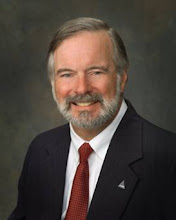Anatolian cities and towns, teachers historical and modern, along with snow and new friendships made last week both strange and beautiful.
Istanbul is to Turkey as New York City is to America. Foreigners visiting Istanbul or New York see well-known sights and many famous buildings, but, if they've seen only those cities, they have not fully been in Turkey or America.
I cannot in a few words describe all that I learned during my five days based at Selcuk University in Konya, but I will say that Professor Fehmi Karasioglu of that institution, and his family and colleagues, made my stay fascinating and thoroughly enjoyable. I also want to thank Cluj Fulbrighter Dan Ratliff for lending me the new (2010) book by Elie Shafak,
The Forty Rules of Love, for that work introduced me beforehand to the Muslim teacher, scholar, poet and holy man Rumi, or Mevlana, and to the 13th-Century interactions between him and the wandering dervish Shams of Tabriz that led to the lasting fame and spiritual importance of Konya.
But rather than run on endlessly, I will choose a few pictures to illustrate my journeys from Konya.
Beyşehir
In the town of Beyşehir on Saturday, some 80 kilometers due west of Konya, we visited an antique store of impressive size, owned by a hospitable gentleman named Yusuf, then went to an historical "Wooden Mosque," with roof and interior of cedar, dating from the Selcuk empire, over 700 years ago, and prior to the reign of the Ottomans.
 |
| Fehmi in his beautiful new Seat Exeo |
 |
| Some rugged outcroppings on the road to Beyşehir |
 |
| Mill wheels and cisterns at Yusuf's warehouse |
 |
| Yusuf, in his shop in town. |
 |
| Oil pitchers, or Aladdin's Lamp? |
 |
| Exterior of the Wooden Mosque of Beyşehir |
 |
| With the kind Imam, who briefed us on the history of the Mosque |
Konya
The next day was Sunday, and was spent largely in preparation for my talk to some Selcuk University doctoral students on Monday. But that night, we went into downtown Konya, and attended the annual Ceremony of the Dervishes, honoring the great poet Rumi, or Mevlana, who spent most of his adult life living, teaching, and writing in Konya. We visited later his tomb and monastery, the latter now a museum.
 |
| The Family Karasioglu of Konya |
 |
| At the Tomb of Mevlana |
 |
| Painting on sale at the Mevlana Ceremony |
 |
Whirling Dervishes Celebrate Mevlana's Life, and Poems, and Love
|
|
|
|
|
|
|
|
|
|
 |
The Finale
Akşehir
Akşehir lies 120 kilometers northwest of Konya, and is the site of a branch campus of Selcuk University, a campus of which my friend Fehmi is now the dean. It is the City of Nasreddin Hoca ("Ho-ja," meaning teacher), a Muslim philosopher famous for the humor in his many parables and children's stories. Here is one example heard in Akşehir from Fehmi:
Nasreddin Hoca was high up on his slippery roof to do some repairs when a man called him from below. "Come down here, I need to talk with you." With considerable difficulty and risk, the good Hoca made his way to the ladder and climbed down. He went to the man, and asked what it was he needed to talk about. "Give me Alms," said the man. "Come with me up onto the roof," said Hoca, climbing back to his slippery perch. The man followed. When he, too, was atop the roof, Nasreddin Hoca told him, "I do not have any."
 |
| Artifacts dating from the Bronze Age in Akşehir Museum |
 |
| The tomb of Nasreddin Hoca has a locked gate on one side, and is otherwise open all around. (His final wink at our world?) |
"It is here, the center of the world. If you do not believe it, you can measure." -Nasreddin Hoca
|






















No comments:
Post a Comment
Please use no profanity in your comments. My granddaughter and other young people will be reading this blog. Thank you.
-Duncan